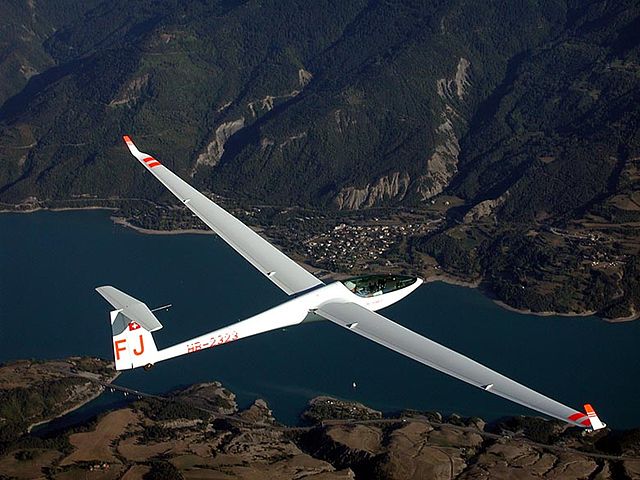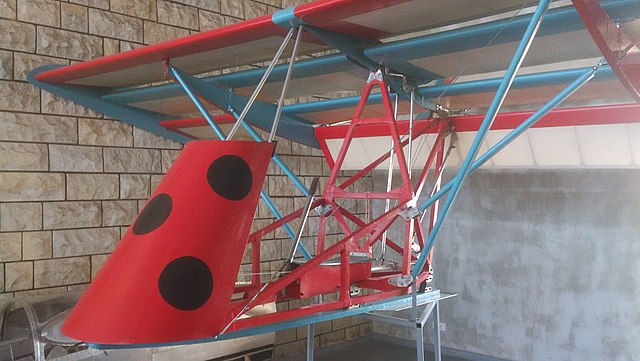Unpowered aircraft can remain airborne for a significant period of time without onboard propulsion. They can be classified as gliders, lighter-than-air balloons and tethered kites. In the case of kites, lift is obtained by tethering to a fixed or moving object, perhaps another kite, to obtain a flow of wind over the lifting surfaces. In the case of balloons, lift is obtained through inherent buoyancy and the balloon may or may not be tethered. Free balloon flight has little directional control. Gliding aircraft include sailplanes, hang gliders, and paragliders that have full directional control in free flight.
Hang glider launching from Mount Tamalpais
A glider is a fixed-wing aircraft that is supported in flight by the dynamic reaction of the air against its lifting surfaces, and whose free flight does not depend on an engine. Most gliders do not have an engine, although motor-gliders have small engines for extending their flight when necessary by sustaining the altitude with some being powerful enough to take off by self-launch.
Single-seat high performance fiberglass Glaser-Dirks DG-808 glider over the Lac de Serre Ponçon in the French Alps
Aerobatic glider with tip smoke, pictured on July 2, 2005, in Lappeenranta, Finland
Otto Lilienthal in flight
Smallest glider in the world – BrO-18 "Boružė" (Ladybird), constructed in Lithuania in 1975





